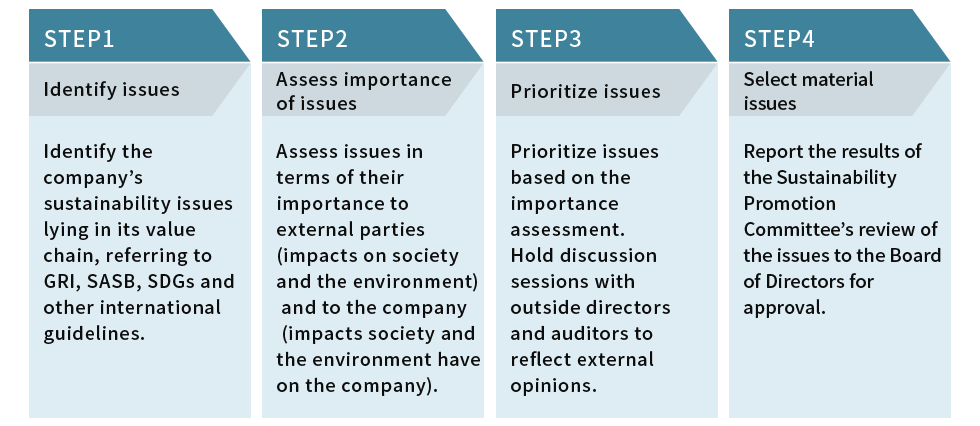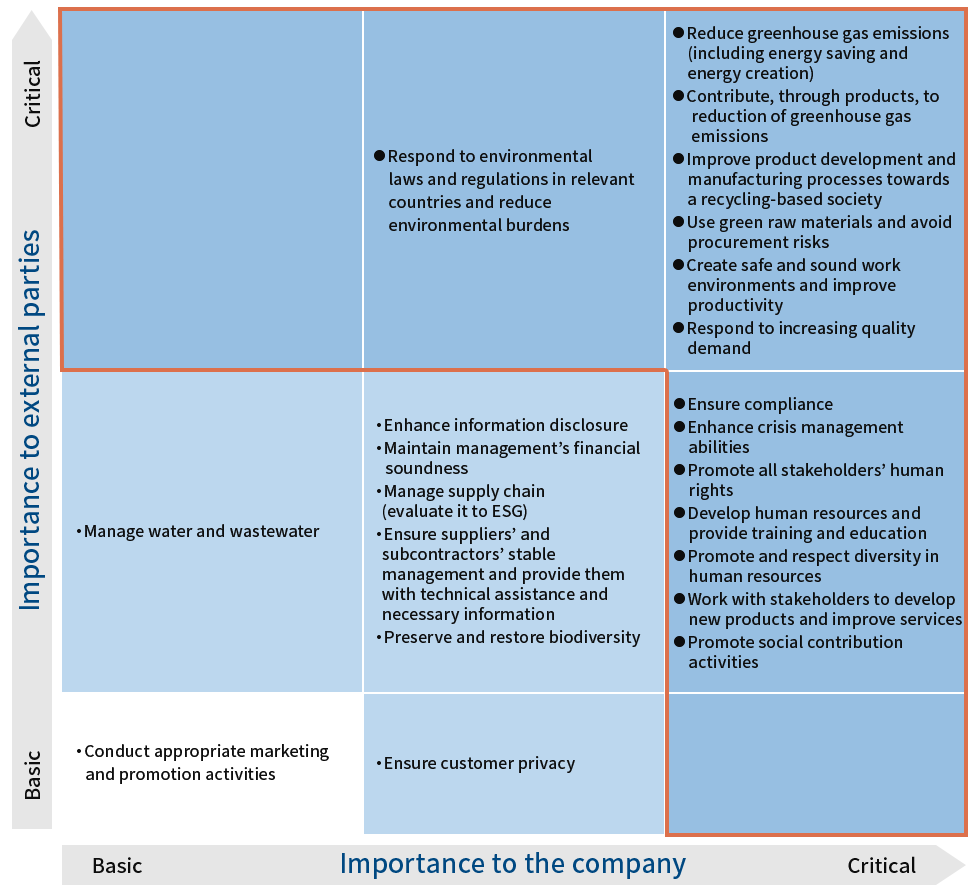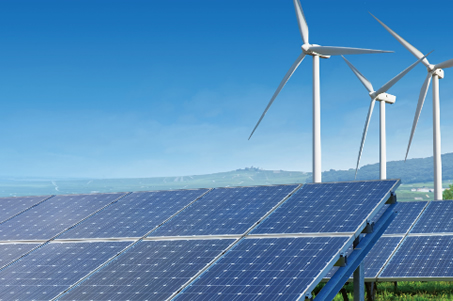- GlobalNetwork
-
- Global Site
- Americas
-
- United States
Material Issues (materialities)
Identification of material issues
At Toyo Tanso, the Sustainability Promotion Committee examined material sustainability issues and reported the results to the Board of Directors. In December 2021, the Board of Directors approved the list of issues. We will increase our sustainability by accelerating our efforts to address the material issues, and will contribute more and more to society and the environment.
How the material issues were selected
To identify material issues, we investigated our relationships with society and the environment along
our
value chain, and then identified sustainability issues, referring to issues addressed in global efforts,
such as GRI, SASB, and SDGs, as well as issues listed in relevant guidelines.
After that, we evaluated the identified issues in terms of the impact our company can have on society
and
the environment, and the impact society and the environment can have on our company, with regard to each
issue, and then selected the ones that were evaluated to be very important for either of the two cases
as
material issues. These material issues were reviewed by the Sustainability Promotion Committee and then,
in
December 2021, they were reported to and approved by the Board of Directors.
We will review the material issues every year in order to promote conversation with our stakeholders,
as
well as to respond to changing management environments and social situations.

Overview of the material issues
The Toyo Tanso Group's material issues are composed of 4 social problem categories and 14 key items
that
the group should work on as a global material manufacturer.
In particular, products developed, manufactured and sold based on social and customer needs in
electronics
(e.g., semiconductors), mobility, life science, clean energy, etc. are likely to contribute enormously
to
the realization of a sustainable society.
Matrix analysis of material issues

Material issue categories and SDGs
|
|
|||||||||||||||||||||||||||
|
|
|||||||||||||||||||||||||||
|
|
|||||||||||||||||||||||||||
|
|
FY2030 Materiality Targets
We are studying KPIs and targets, and we will continue to disclose these as well.
Greenhouse gas emissions per unit of sales (Scope1, Scope2 ) 30% reduction compared to FY2019 (Non-consolidated)
Ratio of sales of environmentally friendly products 35% (Consolidated)
Definition of "environmentally friendly products"
Environmentally friendly products are products that are related to the areas of energy savings, energy creation, and electrification, as described below.
For some products and applications that are used in multiple end markets, we've set constituent sales percentages corresponding to the following environmental contribution areas for each application based on a range of statistical information and then multiplied those percentages by each product or application's net sales to calculate the above values.
- Energy savings: Products for use with power semiconductors (Si semiconductor and SiC semiconductor manufacturing materials, etc.) and LEDs (compound semiconductor manufacturing materials); industrial furnaces (C/C composite products)
- Energy creation: Products for use in wind power, hydropower, geothermal power, solar power, nuclear power, and fusion power
- Electrification: Pump parts for use in electric vehicles, products for use in fuel cells (Catalyst-supported CNovel ® )
Numbers of environmental laws and regulations violations (0) (Non-consolidated)
Numbers of serious complaints (0) (Consolidated)

